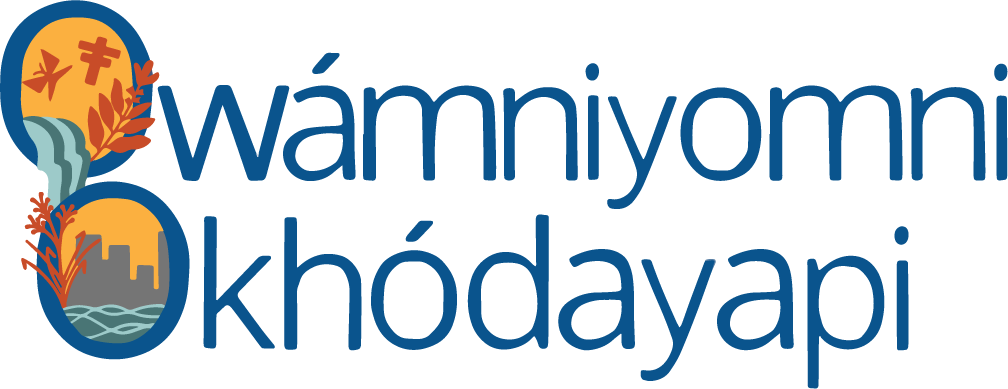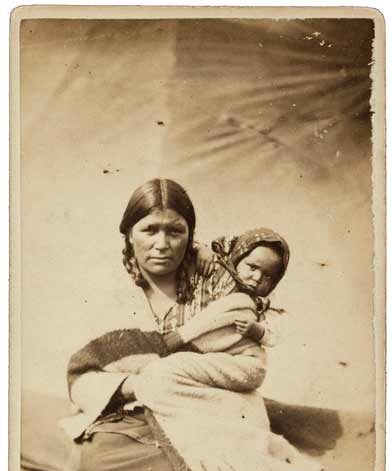By Owámniyamni Okhódayapi | May 16, 2024
You might hear us refer to the four Dakota Tribes in Minnesota but did you know there are 18 Dakota Tribes throughout the U.S and Canada? In today’s blog we’ll be discussing Dakota history in Minnesota and why the diaspora, or the spread of a people from their original homelands, of Dakota people exists.
Dakota Homeland
While the entire state of Minnesota is Dakota homeland, Dakota people also inhabited land far beyond the boundaries of Minnesota. Dakota people were semi-nomadic, meaning they would travel seasonally, utilizing portable housing such as tipis, but they also had base camps with more permanent fixtures, like bark lodges. The lands they roamed include the entire state of present-day Minnesota, north into Canada, across the Midwestern United States and further west into Montana.
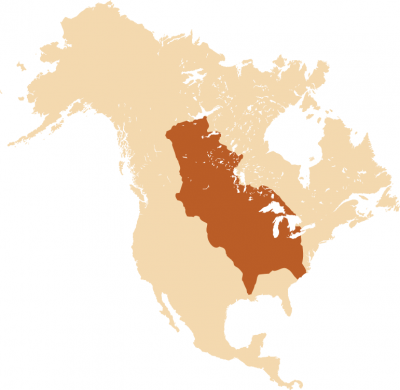
The section in orange shows traditional Dakota homelands. Map source: “Aboriginal Map of North America denoting the Boundaries and Locations of various Indian Tribes”. The House of Commons. Britain: 1857.
Through practices such as moving base camps and rotating fields, the Dakota people ensured the land’s longevity and health for generations to come.
It’s important to note that Tribes or Bands didn’t look the way they do today. They were much smaller; what are now four Tribes in Minnesota would’ve been scores and scores of villages and camps pre-colonization. They would have had small differences in daily practices and language dialects but they shared the same core values. Between these smaller communities existed the Oceti Ŝakowiŋ (Seven Council Fires), comprised of seven major divisions of Dakota people:
Bdewakaŋtoŋwaŋ (Mdewakanton) – Spirit Lake Dwellers
Waȟpekute (Wahpekute) – Shooters Among the Red Leaf People (this translation is debated)
Waĥpetoŋwaŋ (Wahpeton)- The People Dwelling Among the Leafs
Sisitoŋwaŋ (Sisseton)- People of the Fish Villages
Ihaŋktoŋwaŋ (Yankton) – Dwellers at the End
Haŋktoŋwaŋna (Yanktonai) – Little Dwellers at the End
Tituŋwaŋ (Teton) – Dwellers on the Plains
You may also hear these referred to separately as the Dakota, Lakota or Nakota but they all make up the Oceti Ŝakowiŋ or Sioux Nations. Dakota is thought to be the connecting branch or common ancestor between all Sioux Nations.
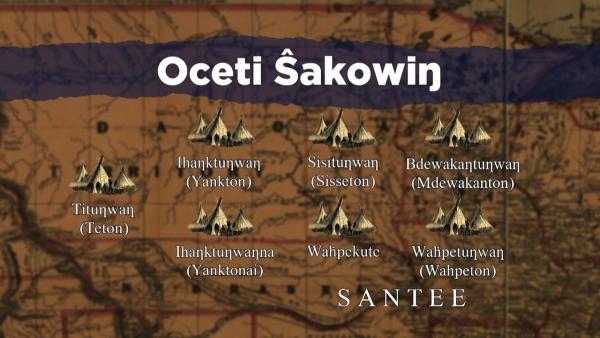
From Oceti Šakowiŋ: The Seven Council Fires. MNHS Collections.
Dakota Exile in Minnesota
Following the U.S.-Dakota War of 1862 the U.S. government directed the exile of all Dakota people from the state of Minnesota, a law that is still technically on the books in Minnesota. Dakota people who had been held in internment camps at Bdote (Fort Snelling) were taken to an isolated area in South Dakota called Crow Creek. Many Dakota people fled to areas they had traditionally inhabited in Canada, Montana, South Dakota and North Dakota hoping for safety. Others took the risk to stay in or return to Minnesota. This resulted in the 18 Dakota Tribes we have in North America today.
Caŋṡayapi (Lower Sioux Indian Community) was established in 1853, prior to the U.S Dakota War as part of the Lower Sioux Agency; those that were loyal to the U.S government during the war were allowed to stay in the state. Tinta Wita (Prairie Island Indian Community) was given federal recognition in 1936, 74 years after the U.S Dakota War. Pezihutazizi Oyate (Upper Sioux Indian Community) was given federal recognition in 1938 and Shakopee Mdewakanton Sioux Community over 30 years later in 1969.
Being Dakota
Being Dakota transcends geographic or Tribal affiliations. While enrollment in Dakota Tribes is significant, many individuals and communities embody Dakota identity regardless of formal enrollment status. This identity is rooted in shared values, cultural practices, and a commitment to preserving and revitalizing Dakota language, art and traditions. It’s a living culture that thrives not only within reservations but also in urban centers, across state lines and even internationally.
Further reading
Oceti Sakowin Essential Understandings & Standards – South Dakota State Government
The US-Dakota War of 1862 – Minnesota Historical Society
Oceti Ŝakowiŋ: The Seven Council Fires – Minnesota Historical Society
